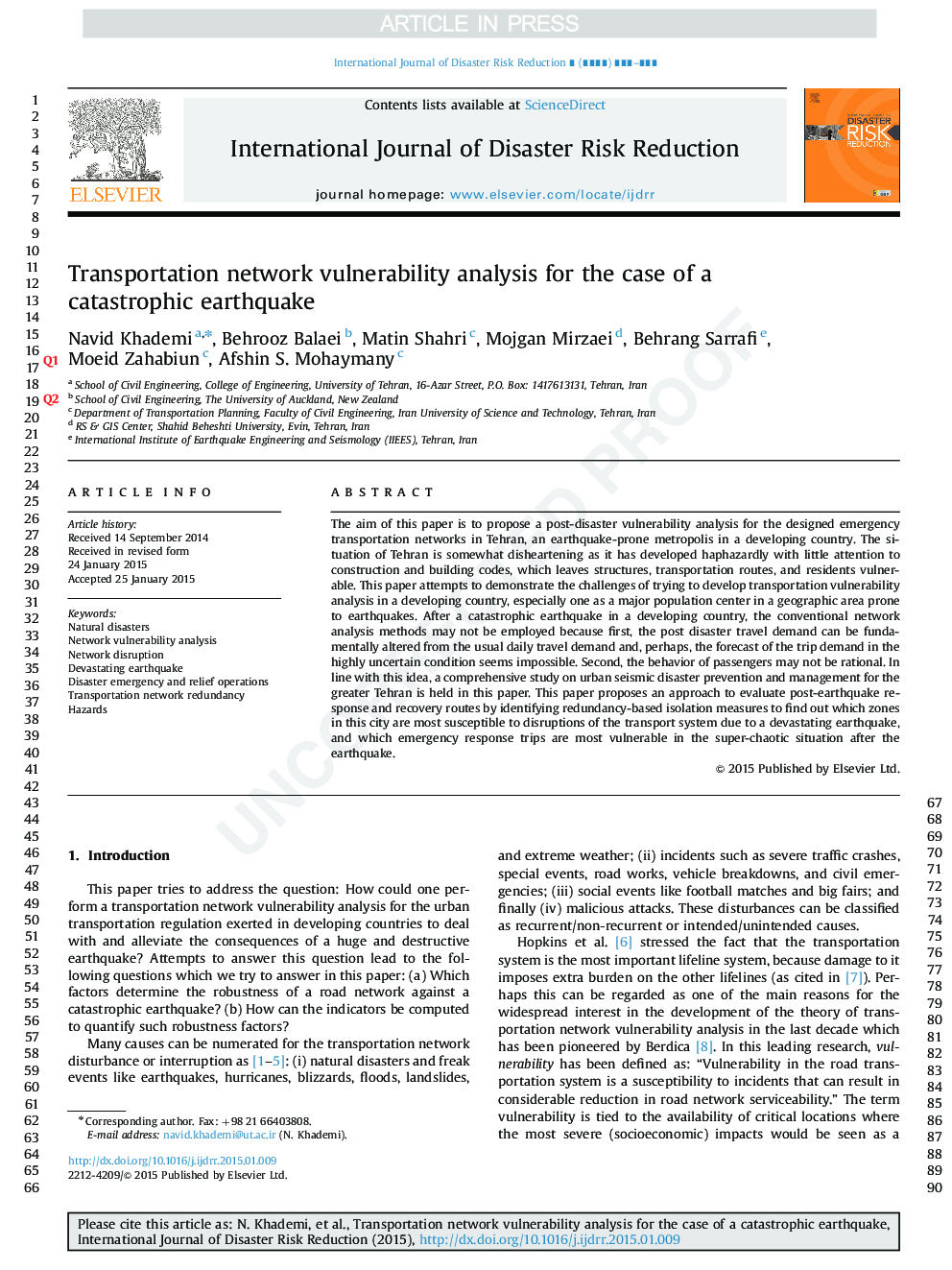| Article ID | Journal | Published Year | Pages | File Type |
|---|---|---|---|---|
| 7473320 | International Journal of Disaster Risk Reduction | 2015 | 21 Pages |
Abstract
The aim of this paper is to propose a post-disaster vulnerability analysis for the designed emergency transportation networks in Tehran, an earthquake-prone metropolis in a developing country. The situation of Tehran is somewhat disheartening as it has developed haphazardly with little attention to construction and building codes, which leaves structures, transportation routes, and residents vulnerable. This paper attempts to demonstrate the challenges of trying to develop transportation vulnerability analysis in a developing country, especially one as a major population center in a geographic area prone to earthquakes. After a catastrophic earthquake in a developing country, the conventional network analysis methods may not be employed because first, the post disaster travel demand can be fundamentally altered from the usual daily travel demand and, perhaps, the forecast of the trip demand in the highly uncertain condition seems impossible. Second, the behavior of passengers may not be rational. In line with this idea, a comprehensive study on urban seismic disaster prevention and management for the greater Tehran is held in this paper. This paper proposes an approach to evaluate post-earthquake response and recovery routes by identifying redundancy-based isolation measures to find out which zones in this city are most susceptible to disruptions of the transport system due to a devastating earthquake, and which emergency response trips are most vulnerable in the super-chaotic situation after the earthquake.
Related Topics
Physical Sciences and Engineering
Earth and Planetary Sciences
Geophysics
Authors
Navid Khademi, Behrooz Balaei, Matin Shahri, Mojgan Mirzaei, Behrang Sarrafi, Moeid Zahabiun, Afshin S. Mohaymany,
